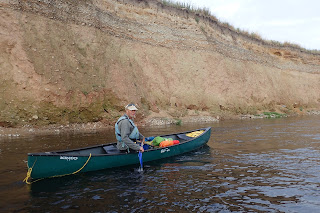Winter visitors travel across Europe to experience British hospitality
I have spent this week seeing a lot of seasonal visitors. Firstly overlooking the wide flat expanse of Morecambe Bay on a very grey day when the mud flats smudged into the sky, as the ebbing tide emptied out to beyond a barely visible Peel Castle. Sitting atop a headland cliff, I was talking to a group of children about the very many winter visitors which travel to the Bay for our relatively mild winters. Even as I spoke great flocks of waders poured back onto the mudflats like smoke from a great forest fire. From a distance of 5 miles, 10s of thousands of birds shifting and swirling were clearly visible.
Over the weekend I visited Silverdale Moss at dusk on another day when the dark grey brooding clouds seemed to seep into the landscape aided by the shortened day. Above this wet meadow landscape, which has recently been recolonised by dense beds of common reed, gathering from all directions, 100s of thousands of starlings swooping in in small groups to join a writhing mass of swirling and twisting birds in a joyous crepuscular dance, before descending en-masse into the security of the reeds. While some of these birds will be resident, at this time of year they are joined by their Scandinavian cousins.
Then today in the lane-side hedgerows, hawthorns liberally adorned with rosy haws, scores of redwings descended to strip the bushes. These birds too have travelled from the northern and eastern fringes of Europe to spend the winter feasting on English nature’s generosity. Along with the winter ducks which now gather in sheltered bays of the lakes, and varieties of geese which also head for, the broad estuaries, marshes and lakes of northern England, they constitute a mass movement, even a migrant invasion, from Iceland, Scandinavia and Russia. An annual mass influx dependent on a warmish welcome in the UK.
It struck me that this annual migration teaches us not only about the importance of our estuaries, marshes and hedgerows to such a vast mass of wildlife from across northern Europe, and how vital it is for us to continue to offer life sustaining ecological sustenance to these migrants. But also how these birds draw a direct link, indeed a web of connections, between ourselves and our human cousins across Europe as far as Russia, a country we always seem to be on the opposite side of history from, but with whom we share so much life.



Comments
Post a Comment